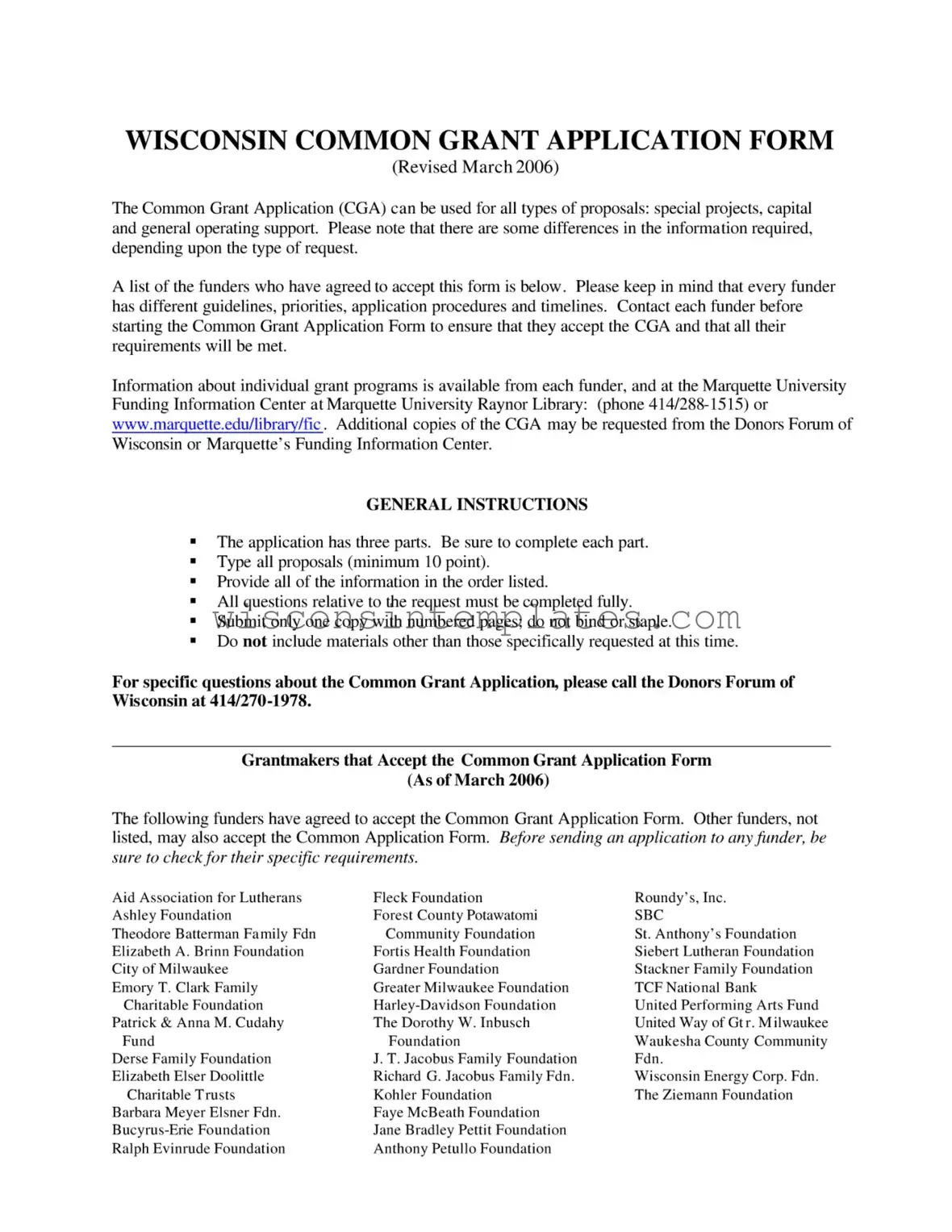The Wisconsin Common Grant Application (CGA) is a valuable tool for organizations seeking funding for various types of projects, including special initiatives, capital improvements, and general operating support. This form streamlines the application process by allowing applicants to present their proposals in a standardized format, which can be particularly helpful when applying to multiple funders. However, it’s important to note that the information required may vary depending on the nature of the funding request. Before diving into the application, organizations should reach out to potential funders to confirm that they accept the CGA and to clarify any specific guidelines or requirements they may have. The application consists of three parts that must be completed in order, ensuring that all necessary details are provided clearly and concisely. Applicants must type their proposals in a readable font and submit a single copy without binding or staples. Furthermore, the application requires essential information about the organization, including its mission, budget, and demographics of the populations served. As applicants prepare their submissions, they should also ensure that they include any required supporting materials, as outlined in the application instructions. For additional guidance, resources are available through local organizations like the Donors Forum of Wisconsin and Marquette University’s Funding Information Center.
